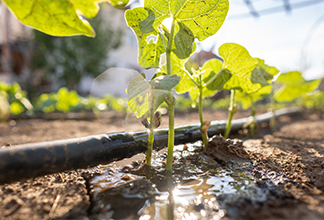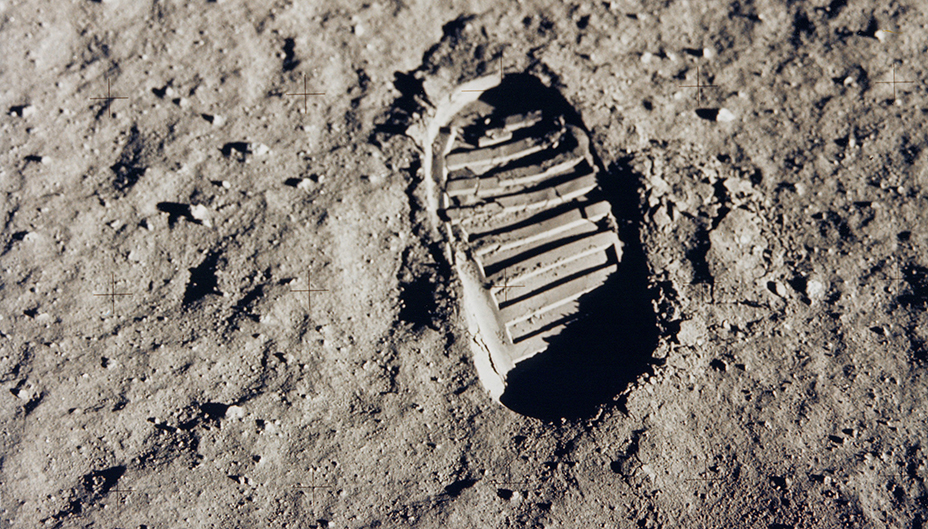The Moon Landing Gave Us Cordless Drills and These 9 Other Innovations
Written by Tamar Satov
Published on July 9, 2019
minute read
Share:
"That's one small step for man, one giant leap for mankind," astronaut Neil Armstrong is famous for saying upon becoming the first person to set foot on the moon on July 20, 1969. As the world marks the 50th anniversary of NASA's historic Apollo 11 moon landing, it's worth counting down some of the lasting innovations that are a direct result of that investment in space exploration — and how those technologies continue to make strides for us all.
10. Running Shoe Design
The spring in your step that comes from a great pair of modern kicks is an adaptation of NASA's moon boots, which were engineered for superior shock absorption, motion control and stability.
9. Scratch Resistant Lenses
The domed visors that covered the fronts of the astronauts' helmets were treated with an abrasion-resistant coating, an offshoot of which is now used by glasses manufacturers to make plastic lenses 10 times more scratch resistant.
8. Retractable Roofs
Retractable cable-supported fabric roofs, such as the one over Vancouver's renovated BC Place, are made using super-strong, lightweight material — a modified version of the fabric that was developed for the Apollo spacesuits.
7. Cordless Tools
Tool maker Black & Decker worked with NASA to develop a special battery-operated compact drill that could be used to retrieve soil samples as low as 10 feet below the moon's surface. Later, Black & Decker brought that technology to market in many other cordless tools for commercial and home use, including its Dustbuster, the first mini handheld vacuum.
6. Liquid-Cooled Garments
Designed to maintain the astronauts' body temperatures during blastoff, NASA's Cool Suit technology pumped chilled water through a circulation system made of tubing inside the spacesuit. That technology is now used to protect those who are at risk of being exposed to high temperatures or overheating, including fire fighters, race car drivers and soldiers, as well as sufferers of multiple sclerosis, cystic fibrosis or severe burns.
5. Breathing Equipment
The portable life-support system that allowed Apollo astronauts to breathe on the moon has been improved over the years and today it's commonly used by firefighters to prevent injuries from smoke inhalation.
4. Pacemakers
Apollo's space circuitry technology was used to develop the Automatic Implantable Cardiovertor Defibrillator, or programmable pacemaker, which significantly lowers the incidence of heart attacks in people with arrhythmia.
3. Insulation
Thin sheets of aluminium and mylar insulation in NASA spacecraft protected the Apollo astronauts from radiation and temperature extremes ranging from about 200 C to -240 C. Similar radiant insulation is now used in buildings, cars, food transportation and packaging as well as emergency blankets.
2. Digital Imaging
Digital image processing software allowed the Apollo team to send back home sharper images of the lunar surface than standard analog transmissions would allow. Similar digital imaging technology is now used in medical diagnostics, including CAT scans, radiography and sonar body imaging.
1. Compact Computers
Before Apollo, computers were so large they'd take up entire rooms. That obviously wasn't going to fly, so MIT worked with NASA to design an onboard computer that was about a one-foot cube in size and weighed 32 kilograms. It used integrated circuits rather than transistors and capacitors, an innovation that many view as the technological revolution that inspired the microchip.
RBC Direct Investing Inc. and Royal Bank of Canada are separate corporate entities which are affiliated. RBC Direct Investing Inc. is a wholly owned subsidiary of Royal Bank of Canada and is a Member of the Canadian Investment Regulatory Organization and the Canadian Investor Protection Fund. Royal Bank of Canada and certain of its issuers are related to RBC Direct Investing Inc. RBC Direct Investing Inc. does not provide investment advice or recommendations regarding the purchase or sale of any securities. Investors are responsible for their own investment decisions. RBC Direct Investing is a business name used by RBC Direct Investing Inc. ® / ™ Trademark(s) of Royal Bank of Canada. RBC and Royal Bank are registered trademarks of Royal Bank of Canada. Used under licence.
© Royal Bank of Canada 2025.
Any information, opinions or views provided in this document, including hyperlinks to the RBC Direct Investing Inc. website or the websites of its affiliates or third parties, are for your general information only, and are not intended to provide legal, investment, financial, accounting, tax or other professional advice. While information presented is believed to be factual and current, its accuracy is not guaranteed and it should not be regarded as a complete analysis of the subjects discussed. All expressions of opinion reflect the judgment of the author(s) as of the date of publication and are subject to change. No endorsement of any third parties or their advice, opinions, information, products or services is expressly given or implied by RBC Direct Investing Inc. or its affiliates. You should consult with your advisor before taking any action based upon the information contained in this document.
Furthermore, the products, services and securities referred to in this publication are only available in Canada and other jurisdictions where they may be legally offered for sale. Information available on the RBC Direct Investing website is intended for access by residents of Canada only, and should not be accessed from any jurisdiction outside Canada.
Explore More

How Soil Carbon Can Become Canadian Farmers' Next Cash Crop
Sustainable practices may mean untapped profits for Canadian farmers, says RBC Economics and Thought Leadership.
minute read

Hitting Net-Zero Means Rethinking How Canada Grows (and Buys and Eats) Food
Top takeaways from a discussion about the climate challenges and solutions that can be found in farming.
minute read

Diversity in Tech: "I Think This Is the Time," Says Lightspeed CEO
Key takeaways from a conversation on Black representation in a recent episode of Disruptors, an RBC podcast.
minute read
Inspired Investor brings you personal stories, timely information and expert insights to empower your investment decisions. Visit About Us to find out more.







